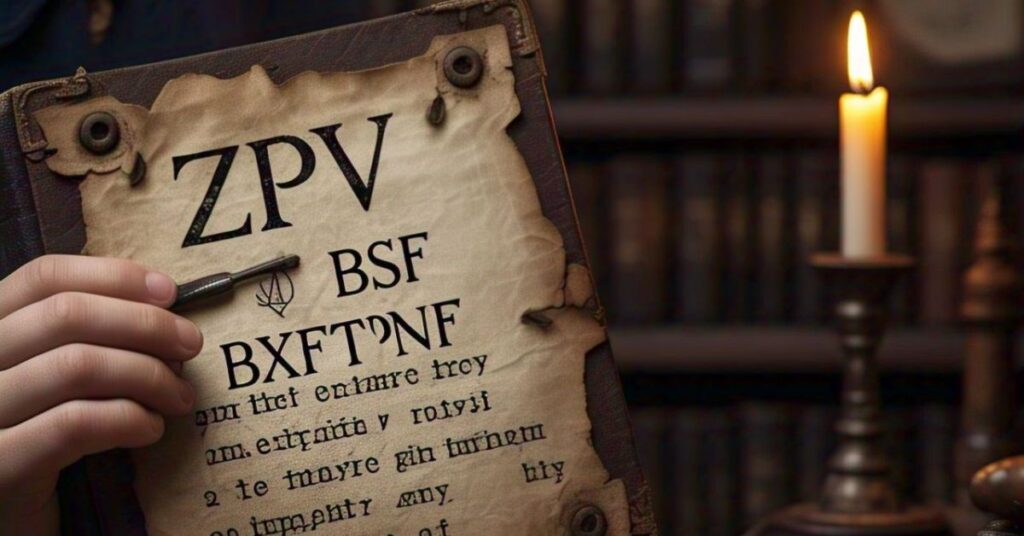Have you ever encountered a confusing message that seemed incomprehensible? In cryptography, deciphering secret signals is both a fun task and an essential skill. One such statement, “ZPV BSF BXFTPNF,” appears to be made up of random characters at first, but it actually has a secret meaning that is just waiting to be found.
By the end of this discussion, you will understand the technique used to encode the message in addition to decoding it. Gaining knowledge about one of the most basic yet often used cipher schemes can help you decipher similar messages in the future.
First, we’ll investigate how to recognize and break down coded text. Then, we’ll apply a simple decryption approach to disclose the hidden message. Finally, we’ll cover the real-world applications of such ciphers, their historical relevance, and how you can play with them yourself.
Understanding the Code
Identifying the Cipher Type
The text “ZPV BSF BXFTPNF” is an example of an encrypted communication using the Caesar cipher, a simple yet powerful encryption method that has been in use since antiquity. In this type of cipher, letters are moved a predetermined number of places ahead or backward in the alphabet.
One way to detect a Caesar cipher is by looking at the structure of words and checking if shifting letters can form recognizable words in a common language. Historically, Julius Caesar used this method to encrypt military messages, ensuring that only those aware of the shift could interpret the content.
Analyzing the Message
The phrase consists of three parts:
- ZPV
- BSF
- BXFTPNF
By identifying patterns and frequent letter combinations, we can start to decipher the message.
Deciphering the Code
Applying the Caesar Cipher
This message’s Caesar cypher moves letters one step backwards in the alphabet.
Let’s apply the shift:
- Z → Y, P → O, V →U→YOU
- B → A, S → RR, F→→E→ARE
- B → A, X → W, F → E, T → S, P → O, N → MM, F→ E → AWESOME
Thus, the decoded phrase is “You are awesome.
Decryption Strategies
Although hand decoding is a great exercise, numerous techniques help speed up the process:
Frequency Analysis: Finding changes by noting often used letters in the language (e.g., “E” is the most often occurring letter in English).
Pattern Recognition: Knowledge of common terms like “THE” or “IS” can indicate a shift in the ttrend.
Brute Force Approach: Trying several shift values till a clear phrase comes oout.
Tools for Decoding
You can help decode messages by:
Online Caesar cipher decoders: Automate decryption.
Cryptography mobile apps: Present interactive learning opportunities.
Manual techniques with a pen and paper: Build your ability to solve problems.
Significance of the Deciphered Message
Positive Reinforcement in Puzzles
Often seen in puzzles and games to inspire the solution, this message presents a motivating statement. It gives cryptography some entertaining and interesting aspects.
Historical Use of the Caesar Cipher
The Caesar cypher has been used to transmit secret messages for thousands of years. During World War I and II, military communications employed many types of substitution ciphers. Basic ciphers like this one laid the groundwork for modern cryptographic techniques, even if they are no longer used in secure communication.
Fun and Educational Aspects
Breaking codes sharpens logical reasoning and problem-solving ability. It also exposes people to the fundamentals of cybersecurity’s key discipline, cryptography.
Modern-Day Applications of Ciphering
Cryptography in Digital Security
While basic ciphers like the Caesar cipher are mostly used for fun nowadays, sophisticated encryption methods guard private information. Some sophisticated cryptography techniques comprise:
AES (Advanced Encryption Standard): Used for securing digital data.
RSA Encryption: Usually used in online transaction security.
End-to-End Encryption: Protects messages against unauthorized access.
These encryption techniques follow the same idea of changing data to safeguard information while depending on sophisticated mathematical algorithms well beyond the simplicity of the Caesar cipher.
Coded Messages in Entertainment
Ciphers are used in:
Treasure hunts and escape rooms: Promoting fun and creative problem-solving.
Alternate Reality Games (ARGs): Including participants in immersive storytelling.
Mystery novels and films: Including a bit of suspense and mmystery.
Educational tools: Educating cryptography in an interesting way.
Conclusion
We looked into the deciphering of the phrase “ZPV BSF BXFTPNF” using a simple Caesar cypher.By reversing each letter, we were able to reveal the hidden message: “YOU ARE AWESOME.”
These kinds of ciphered messages can be instructive as well as entertaining. Whether you’re solving puzzles for enjoyment or learning about cryptography for security considerations, understanding basic ciphers is a great skill to have.
Try deciphering more coded communications and discover what hidden meanings you can find by investigating historical and contemporary encryption techniques to help you to appreciate how codes have shaped communication throughout time.
ALSO READ : https://nifca.org/7372954956-2/


